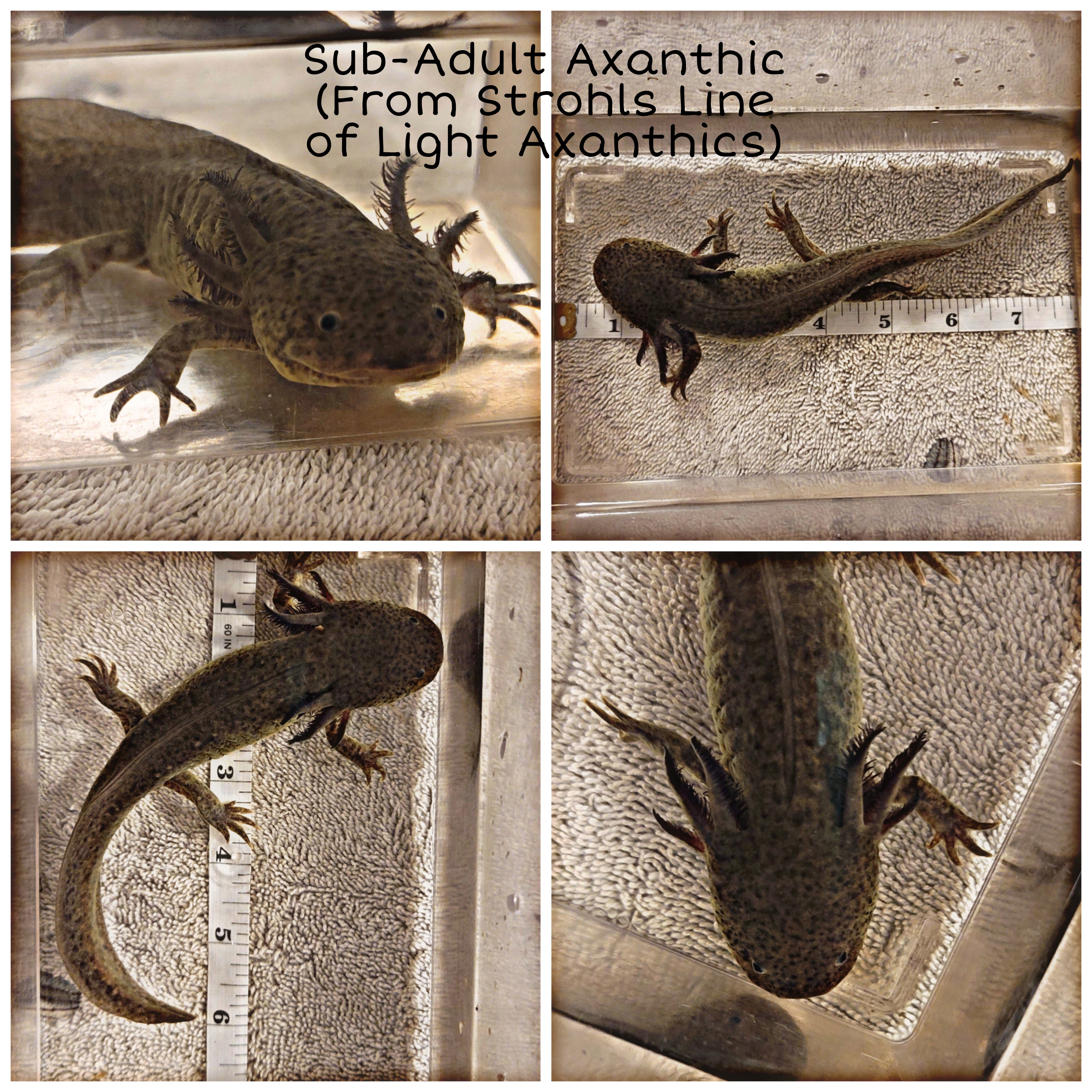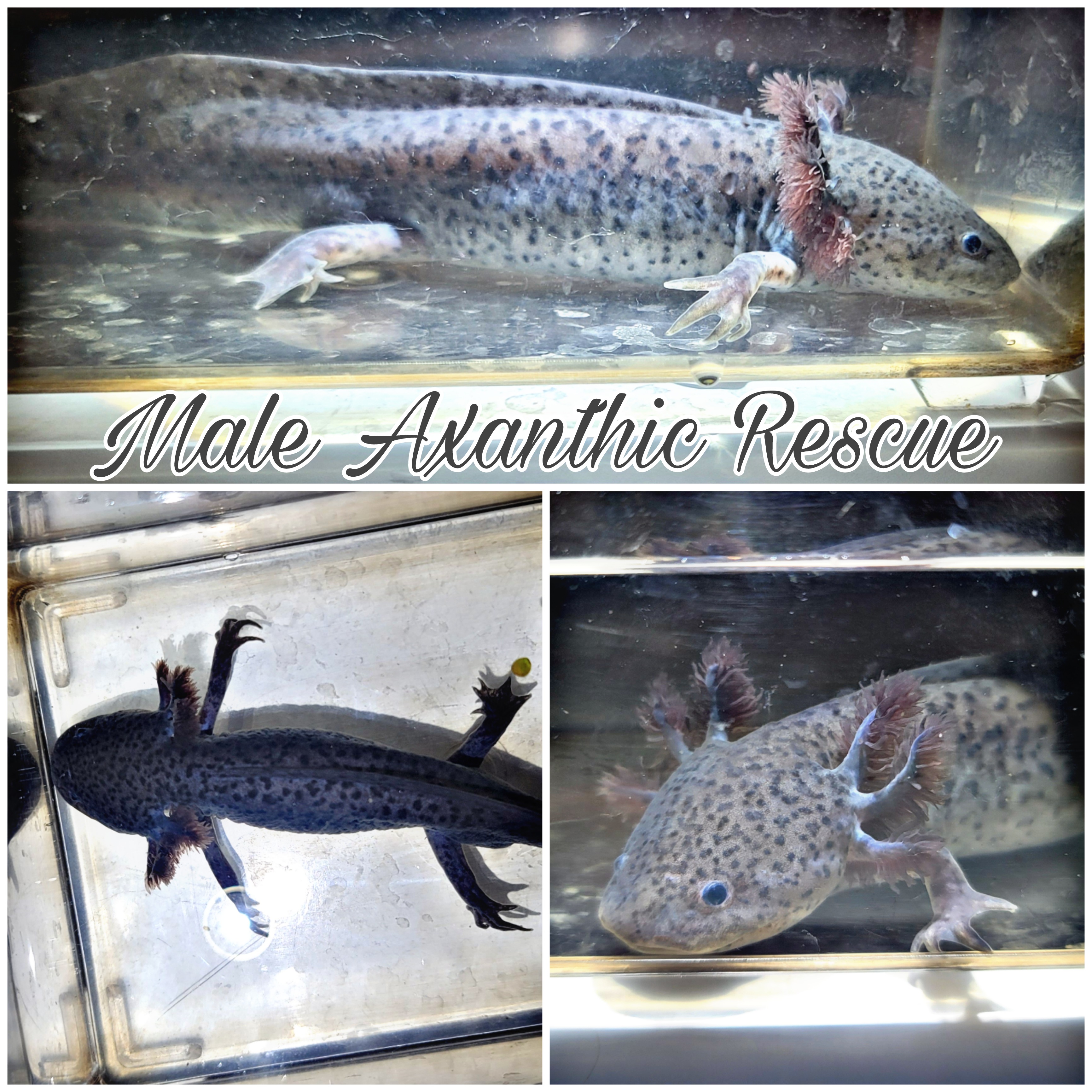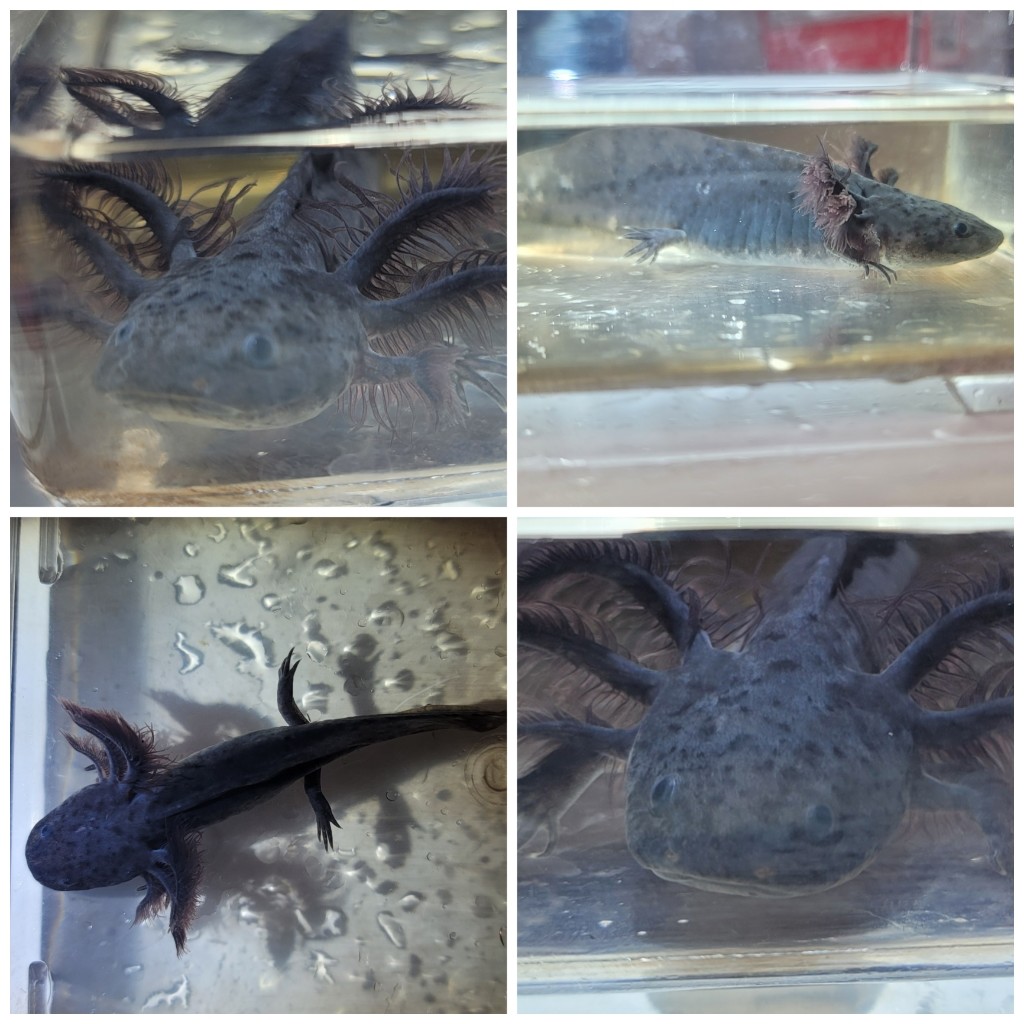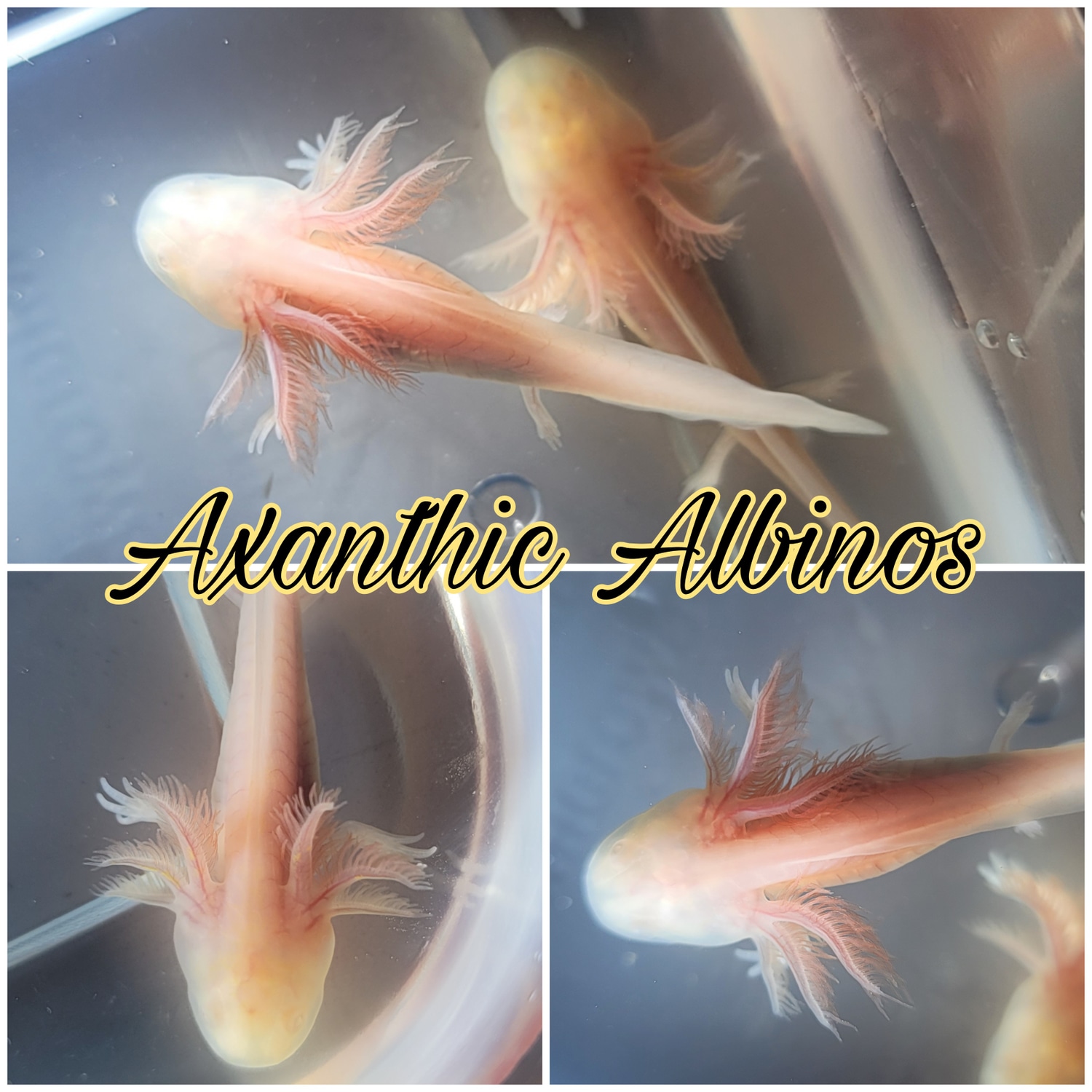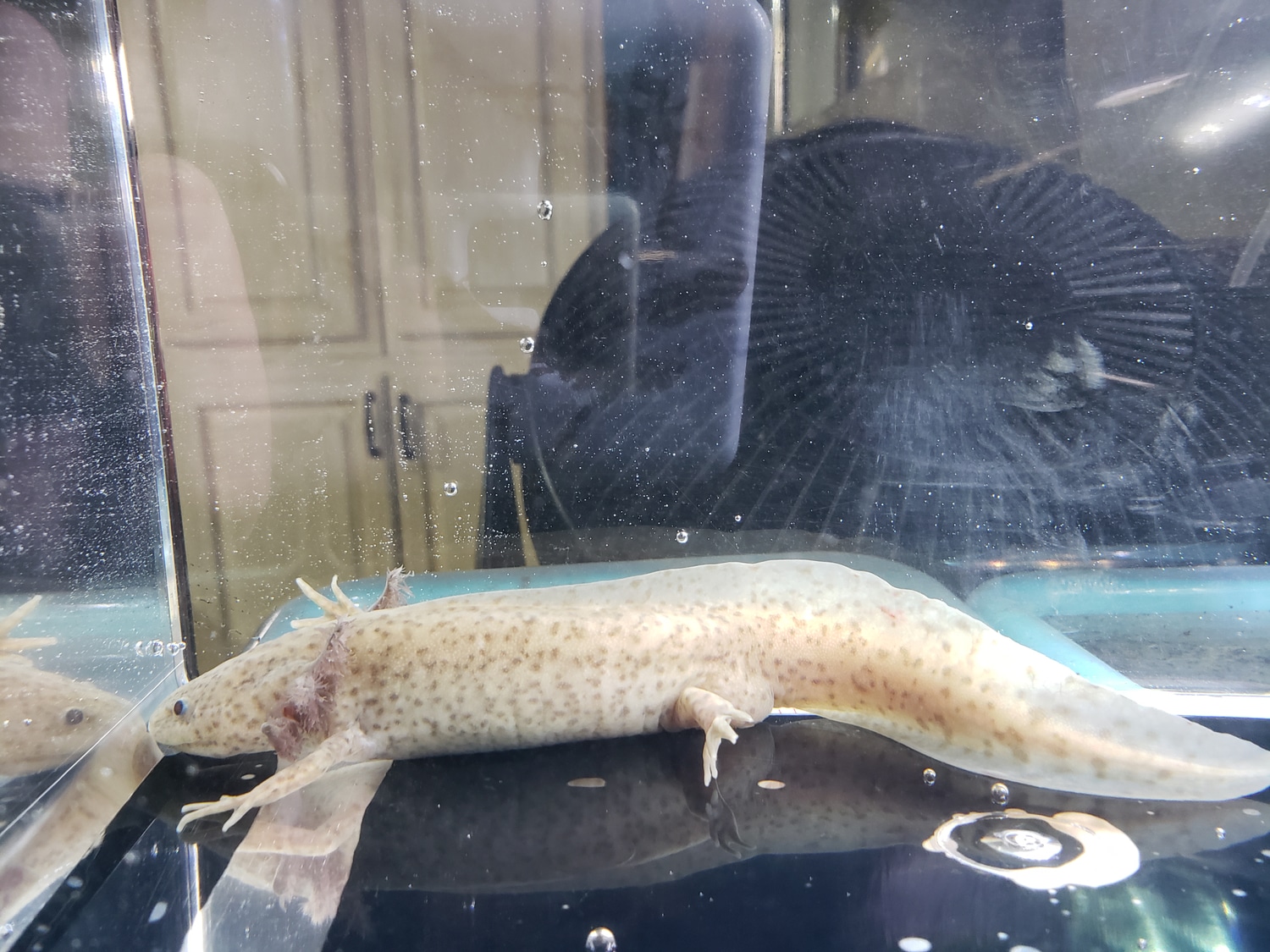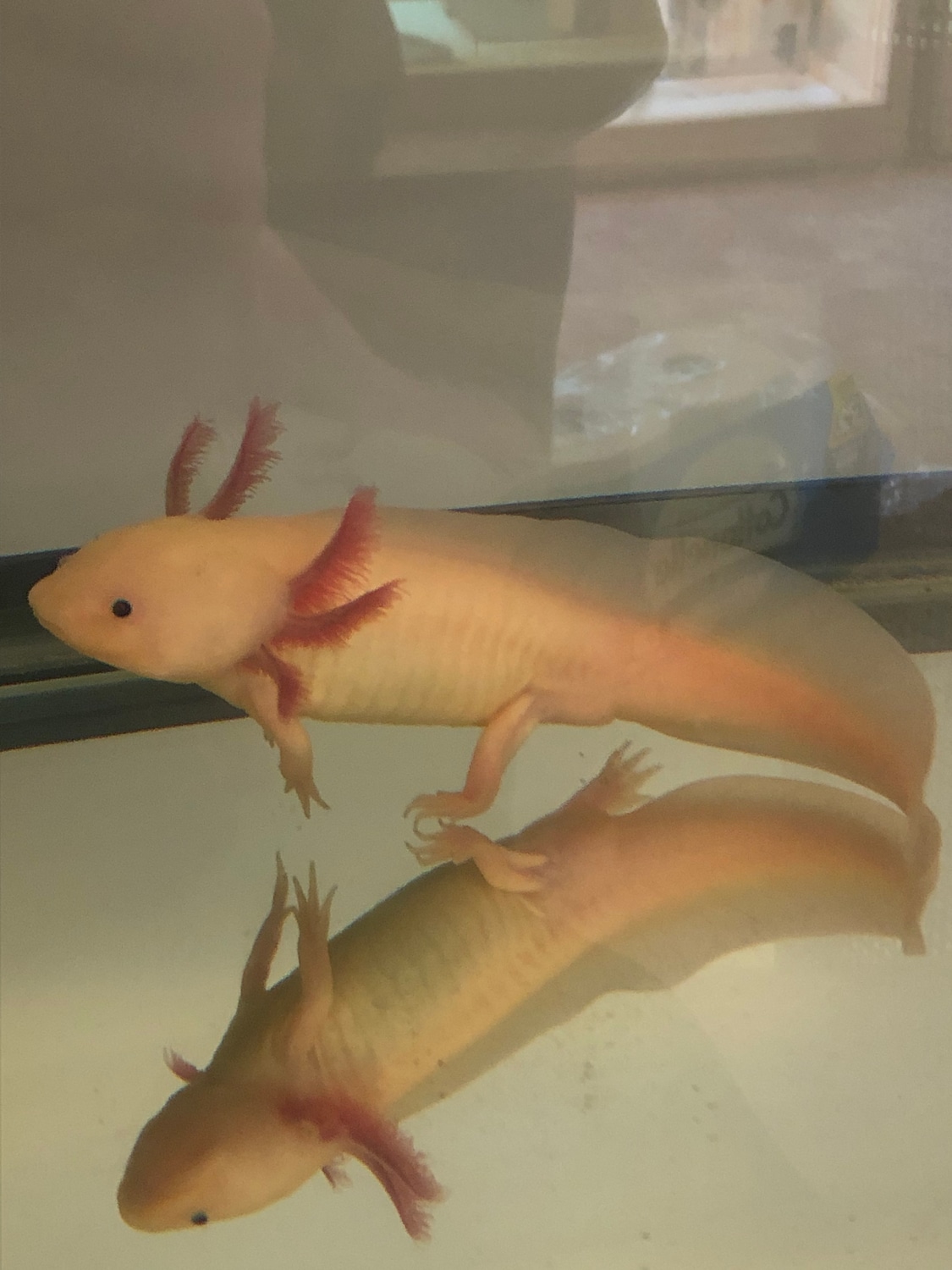Axanthic
Type: Recessive
Aliases: Ax
Issues: N/A
First Produced In: Unknown
Availability: Higher
Last Updated: 2022-09-17
Do you have any suggestions or corrections for this article?
Click here to contribute feedback
About
As you can imagine, axanthicism acts on xanthophores, the pigment cells responsible for producing pteridines. But the name of the trait, which means “lack of xanthophores”, is actually misleading. As it turns out, axanthic axolotls do have a certain amount of xanthophores, but those xanthophores are unable to produce pteridines due to a genetic mutation, which is believed to have originated from a virus.
Issues
If an axanthic axolotl is especially dark, chances are it is also melanoid, but there is no way to be certain unless the genotype of both parents is known. If an axanthic axolotl accumulates a lot of yellow pigment over the years, then it probably isn’t a melanoid, as melanism further reduces the overall number of xanthophores.
History
No history yet.
Appearance
Body
Even though they can’t produce pteridines, the mutant xanthophores are able to store some yellow pigments from the axolotl’s diet (chiefly riboflavin, also known as vitamin B2). This helps compensate a bit for the lack of pteridines, but since they are slowly accumulated over time, axanthic larvae still have a low survival rate compared to other color morphs.
In addition to causing a complete lack of pteridines, the axanthic mutation prevents iridophores from differenciating during development. As a result, axanthic axolotls often look a lot like melanoids. One way to tell them apart is to look at them under a blueish light. The complete absence of yellow pigments at birth tends to give axanthic a purple hue, whereas melanoids are more of a blueish grey. The purple effect tends to fade over time due to the accumulation of other yellow pigments, but some axolotls (such as Sarah, below) do manage to retain it through adulthood.
Proven Lines
No known proven lines
Related Traits
No known related traits
Combos
- Copper Axanthic (Axanthic Copper)
- Mac (Axanthic Copper Melanoid)
